Clarity,
Office 17622,
PO Box 6945,
London.
W1A 6US
United Kingdom
Phone/ Voicemail:
+44 (0)20 3287 3053 (UK)
+1 (561) 459-4758 (US).

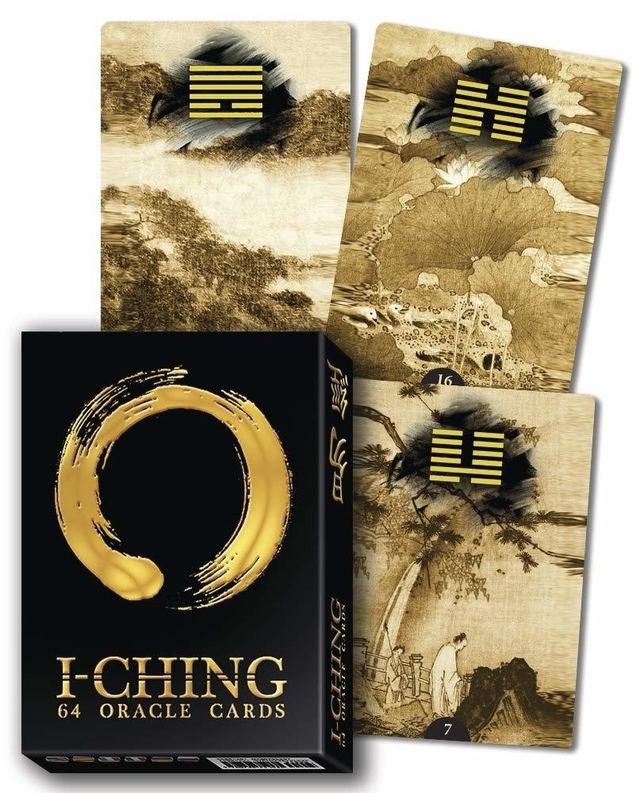
To your first question, I was wondering the same, I suppose I will find out when I buy it.If you get two different cards, do you figure out the moving lines yourself? So if you drew those top two cards in the picture, the reading would be 13.1.3.5.6 to 16?
If it was me, I think I'd try it for a while and see if I'd get helpful readings (or, at least, as helpful as readings done the more usual ways, since not every reading is going to be completely understandable no matter how you cast them). Maybe try some practice-type readings ("How will it go for X in the next chapter of this book?"), or open daily readings like "Guidance for today?" or something, because then it's easy to compare it to what happened. (In other words, questions like "How can I meet Mr. Right?" are probably not good for trying out a new casting method, as it might take a while...)
If I may, I'm rather against those. While it is theoretically possible that you meet an online I Ching oracle with a good RNG, many of them are simply awful and will favor this or that line without you even knowing. Maybe it's just me, of course, but I'm firmly convinced that one should be aware of how much "randomness" there is in the method they're using.or a computer generator.
If I may, I'm rather against those. While it is theoretically possible that you meet an online I Ching oracle with a good RNG, many of them are simply awful and will favor this or that line without you even knowing. Maybe it's just me, of course, but I'm firmly convinced that one should be aware of how much "randomness" there is in the method they're using.
I'm pretty sure of that myselfI can assure you that Clarity's generator works fine.
Change lines are of the utmost importance in a reading and so just picking 2 cards one for primary one relating means you then have to calculate the change lines anyway. Not sure what advantage there is in this methodI've been thinking of buying these Oracle cards, mainly because I collect decks and also because I'm a bit lazy about casting the coins and calculating the hexagram.
The system with this deck is: shuffle, pick randomly a card with an hexagram, put the card back in the deck, repeat for the complementary hexagram. If it happens to be the same, the resulting hexagram will be fixed.
Now, I do have a good I ching book, I just want to have your opinion on casting coins/using online I ching readings/using these cards. Do you consider a method more accurate than the other?
I will appreciate any input.

I'm glad someone else love decks. I buy them mainly when I like the art on them. I also do meditation, so I could draw only one card for the purpose of meditation and then, I would use the method you deviced to obtain a second hexagram if I want a 'true' reading. I must say that your system with the cards is very clever!Hi Paula, while I do like I Ching decks (I own a couple of them), I don't like that method. I see those decks more suited for meditation.
The main reason is that the moving lines it produces are far, far away from those you obtain with the yarrow stalks or the three coins method.
With the traditional methods, once you get the primary hexagram you can obtain any other hexagram as secondary but each hexagram is more or less likely to appear. "Flattening" the probability of the secondary hexagram seems to deprive the oracle of a way to express his meanings. (just my opinion, of course).
There are methods to use the 64 cards to generate the secondary hexagram like the coins or the stalks do, but they are very complicated and would deny the simplicity embedded in the act of drawing one or more cards from a deck.
If you want to follow that route, I wrote down a method to use a 64 IChing deck to get lines one by one with a probability very close to the three coins method:
To get the lines one by one use the following procedure:
- Shuffle the deck and pick a card;
- Draw the topmost line of the hexagram;
- Get two other cards;
- If the top-most lines of both cards are of the same type of the drawn line, then it is a moving line;
- Reinsert the cards in the deck ;
- Repeat steps 1 to 5 other five times drawing the resulting lines from the bottom to the top of the hexagram.
Also, some time ago I posted a set of cards that I devised and I'm currently using. I'll be very happy to share any details on them with you if you are interested. (I devised also "decks" with three or four cards but I refrained to post them here as I feared not many would be interested).
I like your system with the dice!I don't like the idea of the cards. It means that, for example, it would be just as likely to get 1.1.2.3.4.5.6 > 2 as, say, 1.1 > 44. There's nothing sacred about the three-coins method, and it's fine to use systems with different odds of getting the same results -- but that strikes me as a bit extreme and chaotic.
Mind you, they are quite pretty to look at. I could imagine using them to do a reading for someone else, using the coins or a dice or whatever to produce the hexagram, and the cards just as an illustration.
I do have my own odd systems, including throwing a dice 7 times -- odd or even determines whether the line is solid or broken, and the seventh throw determines which line is moving (so you always get just one moving line). Even with that, I've had a few disapproving frowns when I've mentioned it. I like that system because I stop and look at the UC hexagram first, and consider how it applies to the question, before proceeding to determine which line is moving.
People are making very good points about the odds and the moving lines,
Odds Schmodds. :]

Hi IrfanK,I don't like the idea of the cards. It means that, for example, it would be just as likely to get 1.1.2.3.4.5.6 > 2 as, say, 1.1 > 44. There's nothing sacred about the three-coins method, and it's fine to use systems with different odds of getting the same results -- but that strikes me as a bit extreme and chaotic.
Mind you, they are quite pretty to look at. I could imagine using them to do a reading for someone else, using the coins or a dice or whatever to produce the hexagram, and the cards just as an illustration.
I do have my own odd systems, including throwing a dice 7 times -- odd or even determines whether the line is solid or broken, and the seventh throw determines which line is moving (so you always get just one moving line). Even with that, I've had a few disapproving frowns when I've mentioned it. I like that system because I stop and look at the UC hexagram first, and consider how it applies to the question, before proceeding to determine which line is moving.
Today I use this method (attached) but with the difference that, after having found the six changing or unchanging or none changing lines, if there are more changing lines I throw the die until it hit a changing line and this will be the Oracle.
1-4-1-6-5-5 = 9-8-7-8-9-7
The problem with all art or photography as a depiction of a hexagram is it will always severely limit the meaning of the hexagram. Which is not to say there's no point, it can be a fascinating project with beautiful images and so on. But one image can never ever sum the meaning of a hexagram.For me the problem with commercial I Ching decks is that the art work isn't particularly inspirational or informative. Like the sample posted above for 13. Friendship doesn't remind me of anything to do with the hexagram, plus the monocromatic coloring quickly makes all the images look the same. I've created my own deck on 3 x 5 cards where I've drawn my own pictures along with Hilary's words, which are very useful to have right there on the card. I'm also putting together a deck using pictures from the internet. You can see samples on Hilary's facebook page.
Well having taken time to ask Sven questions I couldn't not try to find the thread I guess. Here it is - haven't read the entire thing again but here is the post where I (it was me) checked in Excel.That the 'odds part' must apply to our readings only exists in our minds.
As in, "Well statistically, math says....blah blah blah"
But I've found it to be untrue in the reality that is not dependant on our thoughts.
Hi Liselle,Sven, I think I understand what's on your pdf, but I don't understand this:
Would your example be this?
line 6 - yang
line 5 - moving yang
line 4 - yin
line 3 - yang
line 2 - yin
line 1 - moving yang
37.1.5 to 52 if I haven't made mistakes.
That's what's on the pdf, but it sounds like you've changed it and you don't stop at that anymore, you do an extra step?
As they say, there's no accounting for tastes, and in this case I like the monochromatic style. It doesn't bother me that the text of the hexagram doesn't match the image...it is just illustrative art...For me the problem with commercial I Ching decks is that the art work isn't particularly inspirational or informative. Like the sample posted above for 13. Friendship doesn't remind me of anything to do with the hexagram, plus the monocromatic coloring quickly makes all the images look the same. I've created my own deck on 3 x 5 cards where I've drawn my own pictures along with Hilary's words, which are very useful to have right there on the card. I'm also putting together a deck using pictures from the internet. You can see samples on Hilary's facebook page.
Hi Liselle,
You're right about this. The extra step is to find ONE line which will be the Oracle
Hi surnevs. The post I made some time ago shows two card decks that do exactly what you say: they produce IChing lines exactly as you would do with the three coins or the yarrow stalks methods.Not to say that divining with cards equals divining with three coins because with the coins You achieve the numbers required to decide the behaviour of each line. Personally, I can't see how this should be possible with cards. But, as more than one method shows up with cards....? I really can't deny such possibilities.
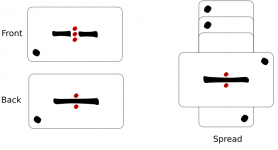
I'll be happy to share, below the list of the methods I feel worth trying. If you want to try any of them let me know, I will dig my hard disk to find the hi-res images and will post them here.I'm willing to know about the deck of cards you deviced if you feel like sharing it with me. I will 'listen' attentivelyThere is almost nothing I'm not interested in!
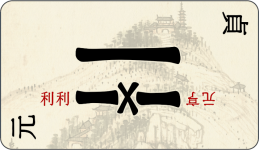
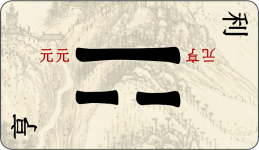
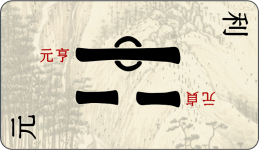
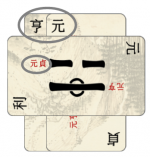
Clarity,
Office 17622,
PO Box 6945,
London.
W1A 6US
United Kingdom
Phone/ Voicemail:
+44 (0)20 3287 3053 (UK)
+1 (561) 459-4758 (US).